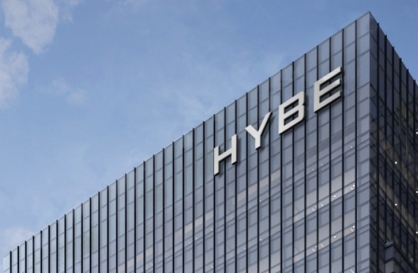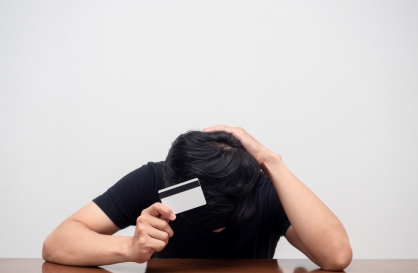[Herald Interview] Small-but-nationwide graduate school appeals to foreigners
UST President Moon mentions Seoul climate change on fine-dust woes
By Kim Yon-sePublished : Feb. 24, 2019 - 17:00
DAEJEON -- A small graduate school has surprised academia. Located a 20-minute drive away from the Government Complex Sejong and two hours from Seoul, it has a relatively short foundation history of 15 years.
The school is the University of Science & Technology in northern Daejeon, with which ordinary Koreans may not be familiar.
In the World University Rankings 2018-19 by the Center for World University Rankings, UST ranked 183rd in the world and second in South Korea, above Georgetown University of the US (the world’s 289th) and KAIST (the world’s 295th and Korea’s sixth).
“I believe our high standing could be attributable to a high score in objective research performance,” UST President Moon Kil-choo told The Korea Herald. He did not hesitate to say with confidence that the result does not coincide with school reputation or assessment that reflects the undergraduate sector, which is irrelevant to the graduate school.
The school is the University of Science & Technology in northern Daejeon, with which ordinary Koreans may not be familiar.
In the World University Rankings 2018-19 by the Center for World University Rankings, UST ranked 183rd in the world and second in South Korea, above Georgetown University of the US (the world’s 289th) and KAIST (the world’s 295th and Korea’s sixth).
“I believe our high standing could be attributable to a high score in objective research performance,” UST President Moon Kil-choo told The Korea Herald. He did not hesitate to say with confidence that the result does not coincide with school reputation or assessment that reflects the undergraduate sector, which is irrelevant to the graduate school.

As of Feb. 24, 2019, UST has produced 707 graduates with doctorates and 1,528 with master’s degrees, including foreign students from more than 40 countries.
The campus in the metropolitan city, where Moon’s office is located, has less than five buildings. The school dispatches students to 32 affiliated campuses across the nation. These campuses are government-funded high-end technology research institutes with an average history of establishment of about 50 years.
“(As a dual system,) students both study and work (doing research) for eight hours a day at the institutes nationwide,” Moon said.
The president picked working and studying concurrently as a merit of the graduate school. “As far as I’m concerned, the school is no more a place for teaching. Unlike past decades, the school is now a place to learn from others.”
He likened the UST curriculum to US schools that dispatch students to private enterprises like Google LLC or Apple Inc. for a certain period of work, adding, “We still lag behind the US case, though.”
Data showed that UST is gaining attention particularly among foreign applicants, who have made up around 30 percent of inbound students over the past few years. As of February this year, the number of foreigners at the school came to 405 out of the total 1,347 students.
While students from Southeast Asia and China topped the list in the early stage of establishment, these days the number of applicants from Eastern Europe and Africa has grown sharply. There were also some students from the US and South America.
“Future society is a connected society. Thus, some people don’t use the term globalization anymore,” Moon said. “We will continue to seek more diversity in nationalities, like pushing for attracting students from Europe.”
Asked the reason why foreign students choose South Korea, Moon said more and more foreign students are acknowledging the nation’s economic scale and enthusiasm for education. “While foreigners worldwide also hope to study in the US, some of them select between schools in Korea and Japan as a niche.”

According to the school’s administration center, a student from the Middle East had picked studying in Korea instead of France or Russia for a nuclear energy major, citing Korea’s status as one of the world’s five major powerhouses in the nuclear power sector and the UST’s distinctive research and study system.
The 32 institutes affiliated with UST allocate mid- and long-term assignments to both foreign and local students.
“As the assignments are futuristic items, selected by the government, students have the benefit of engaging in crucial, prospective projects (during their four semesters). Thus (our education) holds potential,” said Moon.
Among the campuses are the National Fusion Research Institute, Korea Institute of Science & Technology, Korea Atomic Energy Research Institute, Korea Astronomy & Space Science Institute, Korea Aerospace Research Institute, Korea Polar Research Institute, Korea Food Research Institute and Agency for Defense Development.
There are campuses in four big cities -- Seoul, Incheon, Daejeon and Busan -- and four provinces -- Gyeonggi, South Chungcheong, North Jeolla and South Gyeongsang.
The majors offered are broadly classified into six fields: natural science; information technology; bio technology; nano technology; environmental technology; and space technology.
Furthermore, the graduate school’s growth potential has also been proven domestically. In a 2018 assessment by the Institute of Information & Communications Technology Planning & Evaluation, UST ranked No. 1 in thesis performance in the areas of 3D printing and the internet of things among local universities with graduate schools.
Since his inauguration in January 2016, Moon’s philosophy has been that “schools are charged with a mission to make up-front investments in outstanding students, who can contribute to society 10 years later.”
In addition to their studies at campuses, UST students are required to take classes on the history of science and big data at the school’s headquarters.
“We would see the future through history as people say, and the tool for the use of big data must be artificial intelligence. These two are required subjects here irrespective of their majors, such as bio, construction and aeronautic engineering,” said Moon.
Moon hopes to attract the sons and daughters of foreigners working at Korean units of global enterprises. “Foreign branch executives and employees here still don’t know about UST, so we are vitalizing school promotion,” he said.
Noting that Ivy League schools are also active in public relations, he stressed that everyone admitted to UST will be able to be engage in research with little financial burden on the back of the support of state-initiated scholarship programs.
“Our students pay their tuition fees and living expenses with their earnings from working (sort of on-the-spot research) apart from studying.”
UST has been likened to “a comet” in the traditional academic field. Moon describes the school as an Apache helicopter -- small with strong, expeditious power.
Another noteworthy aspect of the school is its high proportion of women among students at 35 percent compared to science and engineering-oriented colleges and graduate schools in the nation.
Tackling fine dust
UST President Moon was recently named co-chair of the Special Commission on Fine Dust Pollution -- also known as the Clean Air Committee -- along with Prime Minister Lee Nak-yon.
Moon holds a doctorate in mechanical engineering in the areas of particle technology and air pollution. He had worked as director of the Global Environmental Research Center at the Korea Institute of Science and Technology. He had also taken the post of president at the International Union of Air Pollution Prevention and Environmental Protection Associations.
Moon highlighted a possible solution in dealing with air pollution here: attaching “tags” on fine dust from China as there are materials that are only generated in the neighboring country. These tags could then be used as evidence in possible disputes with China, he said.
Moon, however, claimed that fine dust could also come from other regions such as Mongol, North Korea and Japan - which is outside of South Korea - aside from China.
He also said that “all of us might simultaneously be assailants and victims of fine dust. So, reduction efforts on the basis of scientific grounds are important.”
He pointed out that Korea’s climate pattern has changed since 2015. “Wind has weakened in Seoul over the past few years. This means fine dust could have held more strength in recent years in the wake of climate change, and may cause mortality for those suffering from a chronic disease.”
This spring might be one the most sensitive, busiest seasons out of his career.
On Feb. 15, Moon and Prime Minister Lee began a series of meetings to map out countermeasures against fine dust at the Government Complex Seoul.
He also appeared busy in his office in Yuseong-gu, Daejeon, in preparing for a commencement address for the graduation ceremony, scheduled for the next day of the interview.
Outside his office was bustling with preparing for the Feb. 21 ceremony, when the outgoing students were destined to gather in the headquarters after finishing their assignments nationwide.
[Profile of Moon Kil-choo]
2019- Chairperson, Clean Air Committee
2016- President, University of Science and Technology
2013-16 President, International Union of Air Pollution Prevention and Environmental Protection Associations
2013-14 Member, Presidential Advisory Council on Science & Technology
2010-13 President, Korea Institute of Science and Technology
1984 Doctorate of mechanical engineering (particle technology, air pollution) at University of Minnesota
By Kim Yon-se (kys@heraldcorp.com)





![[Herald Interview] 'Amid aging population, Korea to invite more young professionals from overseas'](http://res.heraldm.com/phpwas/restmb_idxmake.php?idx=644&simg=/content/image/2024/04/24/20240424050844_0.jpg&u=20240424200058)











![[KH Explains] Korean shipbuilding stocks rally: Real growth or bubble?](http://res.heraldm.com/phpwas/restmb_idxmake.php?idx=652&simg=/content/image/2024/04/25/20240425050656_0.jpg&u=)

